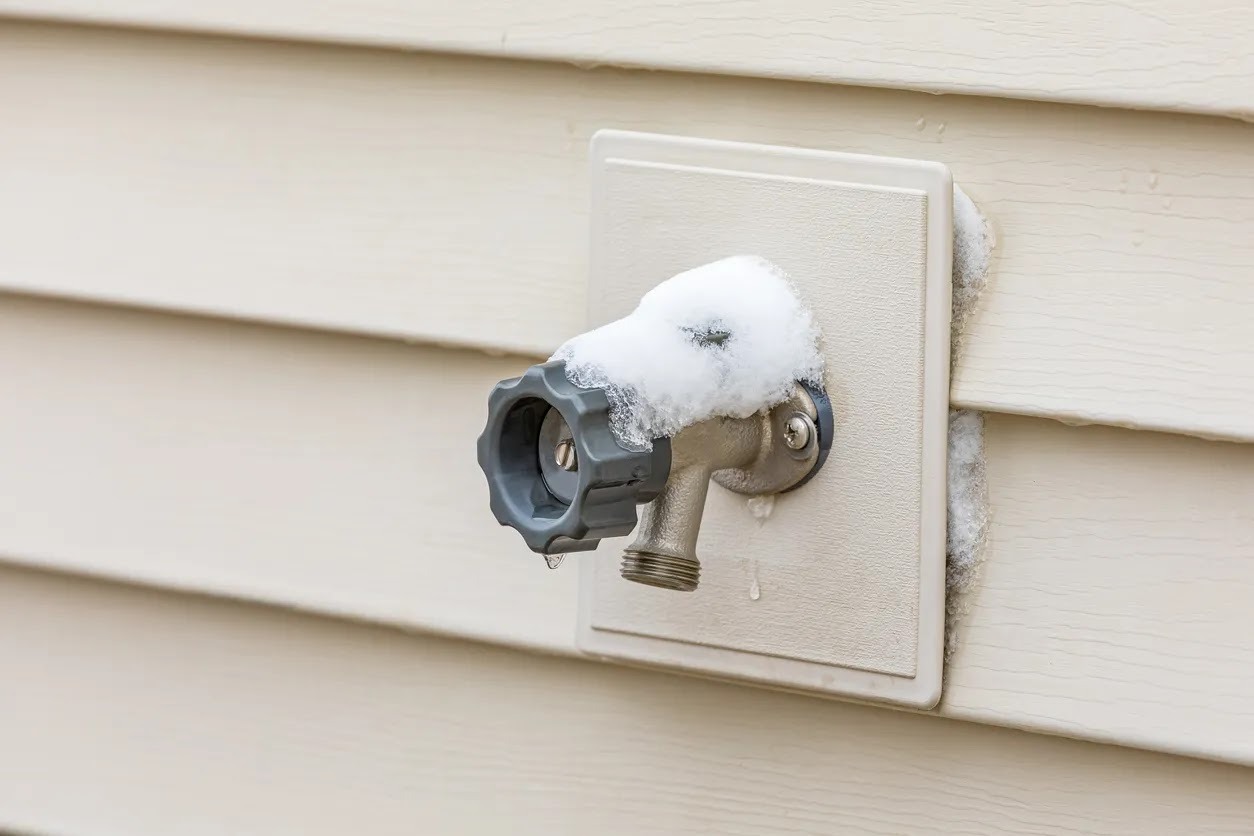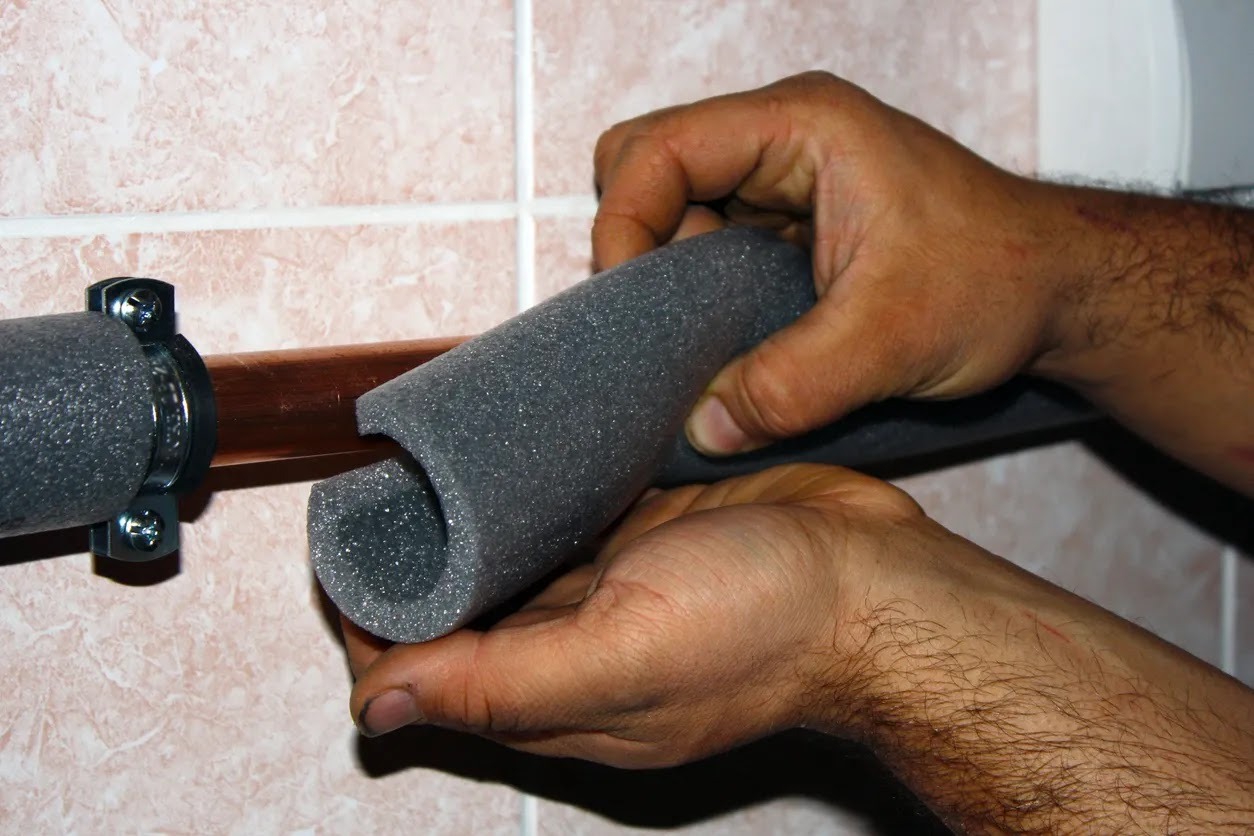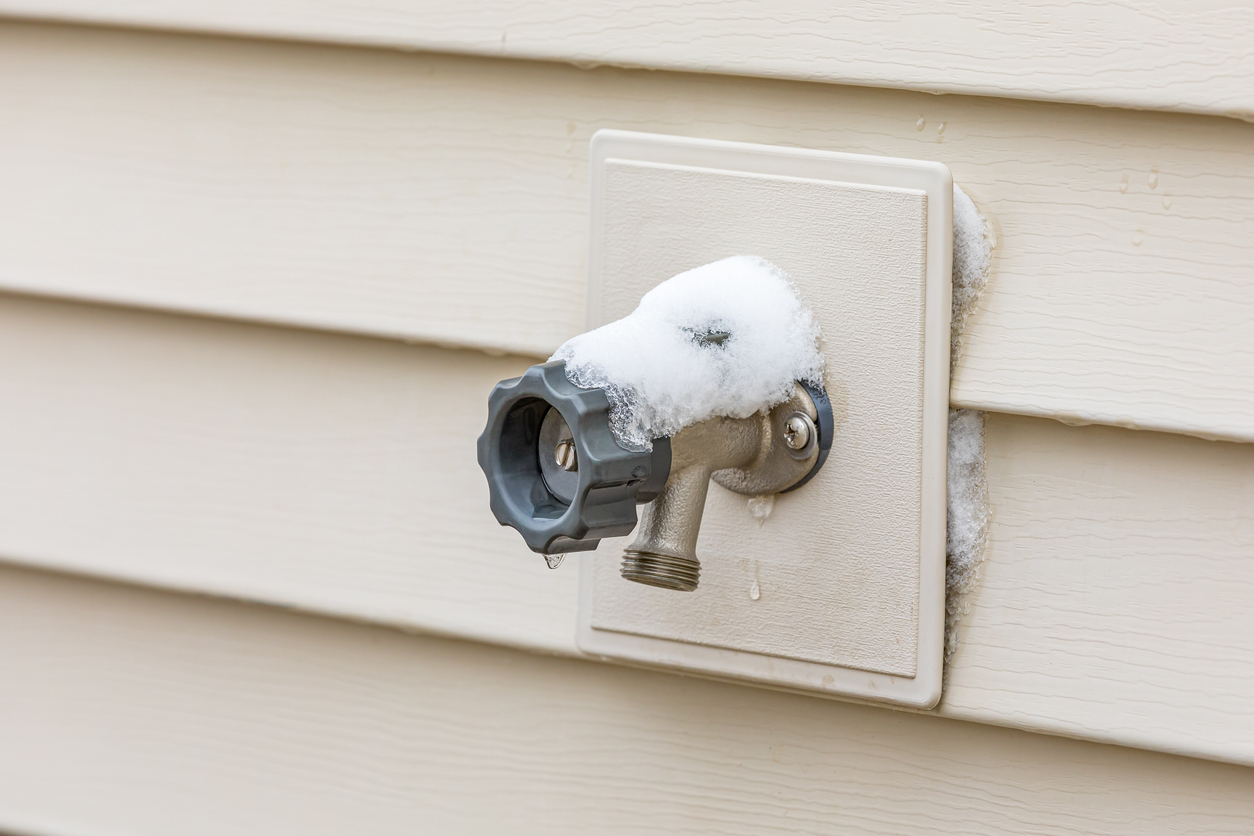Protect Your Plumbing This Winter: Practical Tips to Prevent Frozen and Burst Pipes

Winter’s cold can lead to frozen or burst pipes that cause major water damage, costly repairs, and service interruptions for homeowners and businesses in Lake County, IL. This guide walks you through why pipes freeze, which spots are most at risk, and the practical steps you can take to winterize plumbing—everything from simple DIY fixes to full professional winterization. You’ll learn the main causes of frozen and burst pipes, the best prevention practices like pipe insulation and draining outdoor faucets, and a clear winterization checklist covering thermostats, air sealing, and servicing water heaters and sump pumps. We also cover emergency steps for frozen or burst pipes, safe thawing methods, when to call a pro, and how HVAC and electrical upkeep supports plumbing protection. Finally, there’s a section for Lake County businesses with strategies for larger piping networks, sprinkler systems, and preventative maintenance plans.
What Causes Pipes to Freeze and Burst in Winter?
Pipes freeze and burst when water inside them turns to ice and expands, creating pressure the pipe can’t hold. That expansion, combined with very low temperatures, can crack pipes or blow fittings. Heat loss through exterior walls, poor insulation, and air leaks speed up freezing, so pipes that run through unheated spaces are most at risk. Knowing how and where freezing happens lets you target solutions—insulation, retaining heat, and keeping water moving—to cut freeze risk and avoid emergency repairs during Lake County cold snaps. The sections below point out the most vulnerable locations and how local weather patterns affect freeze frequency.
Why Pipes Freeze and Which Areas Are Most Vulnerable
Pipes freeze when exposed to sustained subfreezing temperatures and lack sufficient thermal protection—remember that water expands about 9% when it freezes. The most vulnerable places are runs through exterior walls, crawlspaces, attics, basements near foundation walls, and unheated garages where temperatures drop for extended periods. Short, exposed runs of copper or PVC near vents or uninsulated studs freeze faster than interior or buried piping, so insulating or rerouting those runs is often the most effective fix. Spotting these trouble areas first lets you focus insulation and air-sealing where they’ll do the most good, then follow up with practical prevention steps like outdoor faucet draining.
How Lake County’s Cold Weather Affects Plumbing
Lake County winters often bring multi-day cold spells and occasional deep freezes that increase freeze-thaw cycles, which stress pipes and seals—especially in older systems. Many local homes have slab or crawlspace foundations and long exterior wall plumbing runs that add exposure, and habits like lowering thermostats during vacancies raise the risk. Because freeze damage depends on both how often and how long temperatures stay low, steady heating and a pre-winter maintenance plan reduce cumulative exposure and the chance of pipe failure. This local context helps time winterization tasks and prioritize actions like insulating exterior-wall plumbing and servicing plumbing repair before sustained cold arrives.
Top Frozen-Pipe Prevention Tips for Winter Plumbing Protection

Preventing frozen pipes combines insulation, measured water management, and monitoring to stop ice from forming and pressure from building. Key actions include insulating vulnerable runs, draining and protecting outdoor spigots, using heat tape where needed, and adding smart leak detection to catch small problems early. Used together, these steps lower freeze risk and the fallout from burst pipes. Below are the top prevention tips you can put into practice now and each season.
- Insulate exposed pipes and those running through exterior walls, attics, crawlspaces, and unheated garages to keep temperatures stable.
- Disconnect and drain garden hoses, and fit insulated covers on exterior spigots before the first hard freeze.
- Keep a safe minimum indoor temperature and open cabinet doors under sinks on exterior walls so warm air can reach pipes.
- Use heat tape for short, exposed sections when appropriate and install smart leak detectors for early alerts and automatic shutoff if possible.
These prevention steps work best when you combine them into a seasonal checklist tailored to your property. The insulation comparison table below helps you pick the right material for Lake County conditions and the size of your job.
In practice, closed-cell rubber and foam sleeves are practical, cost-effective options for many Lake County homes, while heat tape is best used selectively and with proper electrical safety. Next we outline step-by-step winterization actions you can apply for whole-home readiness.
How to Insulate Pipes Correctly: Materials and Methods
Pipe insulation slows heat loss by adding a thermal barrier around the pipe surface, reducing conductive heat transfer and the chance of freezing in unheated or exterior areas. For most homeowners, slip-on foam sleeves are quick and cheap for short, accessible runs. Closed-cell rubber or thicker fiberglass with a vapor barrier give higher R-values and longer-lasting protection for exterior wall penetrations and crawlspaces. Slip-on sleeves work well for straight lengths; wrap-style insulation is better for elbows and irregular runs. Seal joints and seams with foil tape or compatible adhesives so the insulation performs continuously. If insulation alone won’t prevent freezing—on very exposed runs or long exterior distances—consider professional options like rerouting piping, installing heat trace, or adding monitoring. Choosing and installing the right insulation reduces repair risk and often pays for itself by avoiding major water damage.
Why Draining Outdoor Faucets and Hoses Matters
Water left in outdoor spigots or attached hoses can freeze inside the spigot or shallow exterior piping, expanding and cracking valves or connected lines. To winterize an outdoor faucet: disconnect hoses and drain them, close the interior shutoff valve for that spigot, then open the exterior spigot to let any trapped water drain out, and finally fit an insulated faucet cover. This simple, low-cost routine prevents ice buildup and hidden leaks that can let water into wall cavities when things thaw. Doing these small steps each season keeps exterior plumbing safe and helps avoid a small oversight turning into a big repair.
How HVAC and Electrical Care Help Protect Plumbing in Winter
HVAC performance and safe electrical work are tied directly to plumbing freeze risk. A reliable heating system keeps indoor temperatures steady, and safe electrical connections are critical for active prevention tools like heat tape and smart detectors. A well-maintained furnace prevents sudden temperature drops in living spaces and mechanical rooms, and electrical inspections reduce the risk of heat-tape misuse or circuit issues. Coordinating HVAC, electrical, and plumbing services creates layered protection that’s stronger than any single measure. The sections below explain why furnace upkeep matters and the practical role of heat tape and smart leak detection.
Why Furnace Maintenance Matters for Stable Indoor Temperatures
Regular furnace maintenance—changing filters, checking combustion, and verifying safety controls—helps ensure consistent heat throughout the home and cuts the chance of an HVAC failure that could let temperatures plummet and pipes freeze. Uneven heating or system downtime creates cold pockets near exterior walls where freezing often starts, so scheduling balanced airflow checks and service before winter is a high-impact preventive step. Routine HVAC service also uncovers problems like blocked vents or failing draft controls that raise freeze risk over several cold days. Keeping HVAC in good shape complements insulation and sealing work and lowers the overall chance of plumbing freeze events.
How Heat Tape and Smart Leak Detection Reduce Winter Plumbing Risk
Heat tape is an electric trace heating product that supplies low-level heat to localized pipe sections to stop ice from forming; pick the right type for your pipe material and follow electrical safety rules to avoid overloads or fire risk. Smart leak detectors add another layer by sending alerts when moisture appears or by triggering automatic shutoff valves to stop flow when a leak is detected—minimizing damage from slow leaks or sudden bursts. Both technologies need correct electrical installation and regular testing. Used with insulation and HVAC maintenance, they form a modern, layered defense against winter plumbing failures. Countryside Plumbing Sewer and Septic can coordinate HVAC and electrical work with plumbing winterization, giving Lake County customers a single local partner for comprehensive winter readiness.
Winter Plumbing Solutions for Commercial Properties in Lake County, IL
Commercial properties face heightened winter risk: larger pipe networks, sprinkler systems, mixed occupancy, and business-continuity needs make freeze-related downtime costly. Commercial winterization usually includes sectional draining, insulating long exterior runs, monitored heat tracing, and coordinated shutdowns for irrigation and sprinkler mains. Preventative maintenance contracts with pre-winter audits and scheduled inspections cut emergency callouts and reduce disruption. The subsections below describe common commercial vulnerabilities and the professional solutions that protect businesses.
Common Winter Plumbing Challenges for Businesses
Businesses deal with long exposed pipe runs through unheated service corridors, periodic vacancies or low-occupancy hours that allow temperatures to fall, and sprinkler and irrigation mains that need specialized draining and isolation. Manufacturing and multi-tenant buildings may have large water systems and wide roof drains that can freeze and cause ice dams or interior flooding. The consequences include lost revenue during repairs, safety hazards, and insurance complications if maintenance was neglected. Identifying these commercial risks lets you apply targeted engineering controls like zoned thermostats, heat tracing, and contractual inspections.
How Professional Winterization Protects Commercial Plumbing
Professional commercial winterization includes a winter readiness audit, industrial-grade insulation and heat tracing, controlled draining of irrigation and sprinkler lines, and maintenance contracts with scheduled inspections and rapid-response plans. These services deliver measurable ROI by cutting unscheduled downtime, lowering emergency repair costs, and supporting insurance compliance with documented preventative care. For Lake County businesses that want one vendor for plumbing, sewer, septic, HVAC, and electrical work, Countryside Plumbing Sewer and Septic offers commercial winterization packages that emphasize licensed, insured workmanship, clear pricing, flexible plans, and coordinated inspections to keep operations moving during winter.
- Schedule a pre-winter commercial audit to map vulnerabilities and prioritize heat tracing and insulation.
- Put a maintenance contract in place that defines inspection frequency, documentation, and emergency response protocols.
- Use monitored heat tracing and smart leak detection to protect critical mains and enable quick shutdowns if a breach occurs.
These professional steps reduce the chance of expensive winter disruptions and give business owners documented safeguards and service support that keep operations running through Lake County’s cold months.
Frequently Asked Questions
What are the signs that my pipes may be freezing?
Signs include little or no water at faucets, frost or condensation on visible pipes, and strange noises like banging or hissing. Water stains, bulging drywall, or wet insulation can indicate a burst pipe. Early checks—testing multiple fixtures and monitoring water pressure—help you narrow the problem before it becomes worse.
How can I prepare my plumbing for an extended absence during winter?
For an extended winter absence, keep the home at a minimum of 55°F (13°C) if possible and consider shutting off the main water supply. Drain pipes by opening faucets and flushing toilets. Insulate exposed pipes in unheated areas and use covers on outdoor spigots. Leaving cabinet doors open under sinks helps warm air circulate around plumbing.
What should I do if I suspect a hidden leak in my plumbing?
If you suspect a hidden leak, isolate valves to the likely zone and watch for signs of active flow like damp spots or new stains. If the source stays hidden or the leak continues, call a professional for leak detection—professionals use specialized tools to locate leaks without unnecessary damage.
Are there specific insulation materials recommended for winterizing plumbing?
Common effective options are foam pipe sleeves, closed-cell rubber, and fiberglass wrap. Foam sleeves work well for short, accessible runs; closed-cell rubber provides higher R-values for exterior wall penetrations; fiberglass is good for longer runs needing more insulation. Choose the material that fits your layout and conditions.
How often should I schedule maintenance for my plumbing system in winter?
Plan at least one yearly maintenance visit—ideally before winter—to inspect water heaters, sump pumps, and check for wear or leaks. Regular maintenance catches problems early and lowers the risk of freeze-related failures during cold weather.
What are the benefits of using smart leak detection systems?
Smart leak detectors monitor for moisture in real time and alert you before damage becomes severe. Many systems integrate with automatic shutoff valves to stop water flow when a leak is detected, cutting damage and repair costs. They’re especially helpful in winter when frozen pipes can lead to sudden failures.
Can I use heat tape on all types of pipes?
Heat tape works on many pipe types, but you must choose the right product for your pipe material and follow the manufacturer’s installation instructions. Some heat tape is suitable for metal and certain plastics, but electrical safety and proper installation are critical—consider professional installation for the best results.
Conclusion
Winter plumbing protection prevents costly damage from frozen and burst pipes. Simple measures—insulation, proper drainage, steady heat, and routine maintenance—cut the risk dramatically. For full coverage and peace of mind, consider professional winterization services that prepare your plumbing for the cold months. Take action now to protect your home or business and avoid winter headaches later.
Flexible Financing Options
Get the service you need now pay over time with easy, affordable financing plans.

Blogs


Common Sewage Pump Issues
.jpg)

